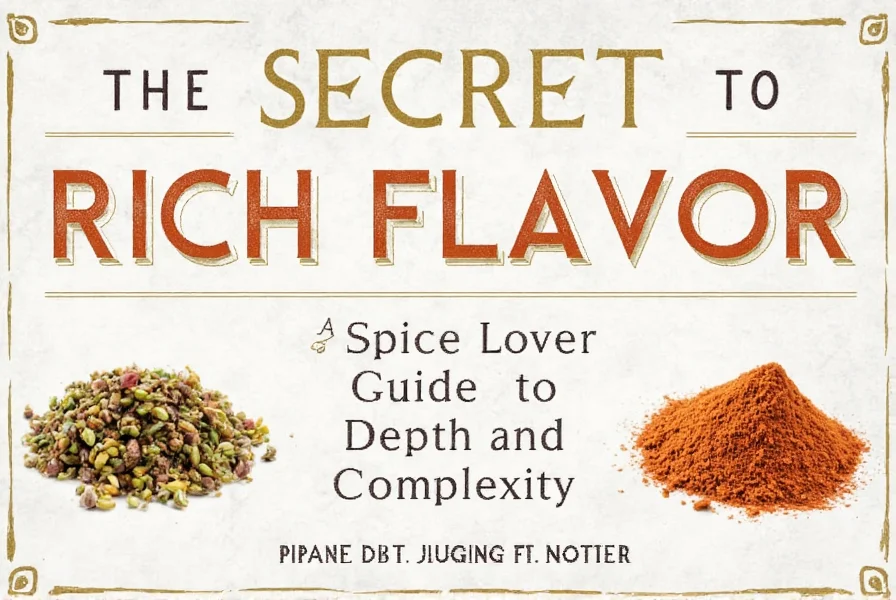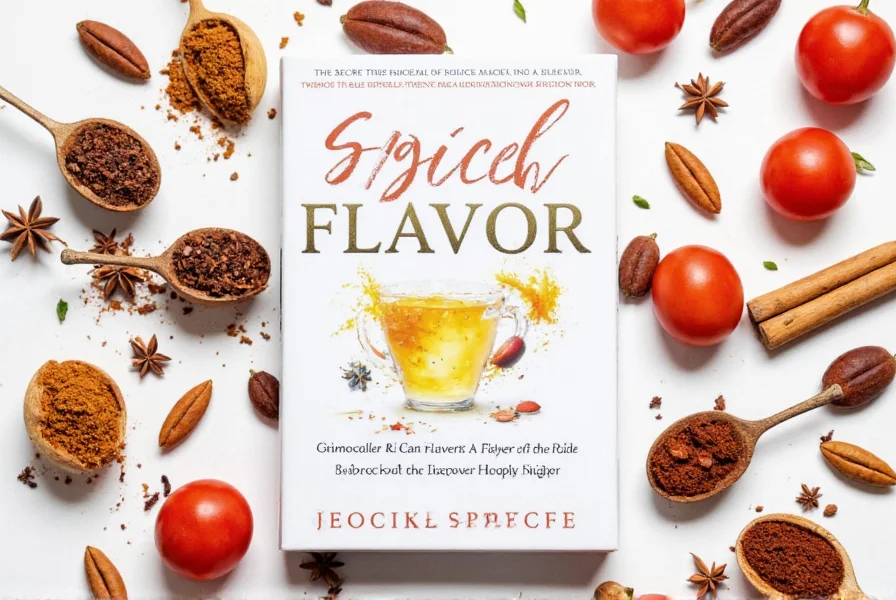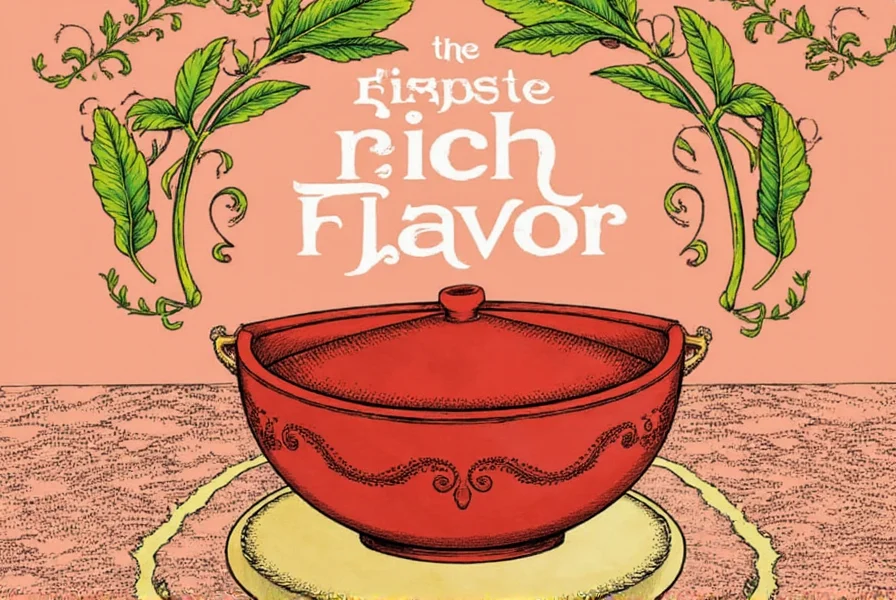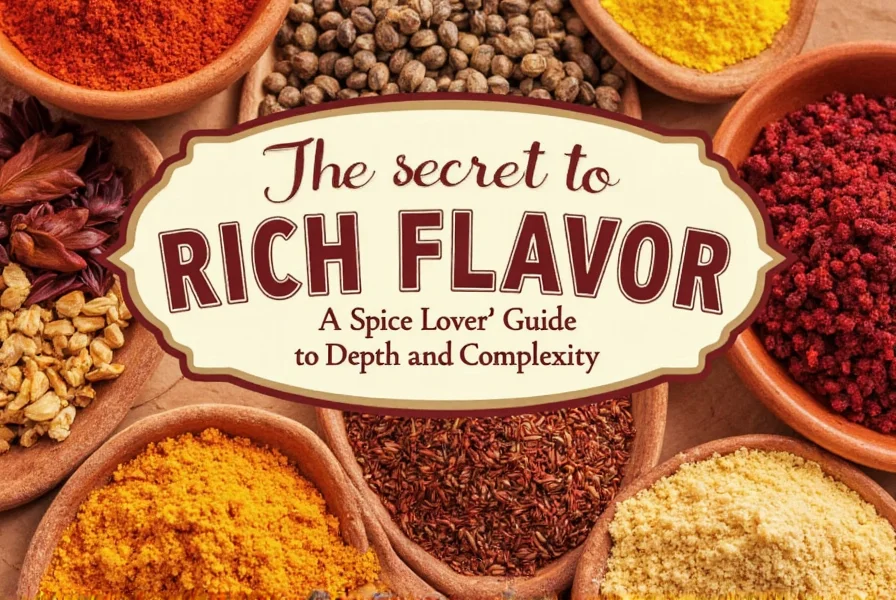Table of Contents
What is Rich Flavor?
Rich flavor refers to a deep, layered, and complex taste profile that lingers on the palate. It's not just about intensity but about harmonious balance of multiple taste dimensions (sweet, salty, sour, bitter, umami) working together to create a full-bodied experience. Think of it as the difference between a simple melody and a symphony orchestra—both have notes, but one has more depth, emotion, and nuance.

Scientifically, rich flavor develops through Maillard reactions, caramelization, and umami-enhancing compounds. Professional chefs emphasize that true richness comes from balancing five basic tastes while maintaining textural contrast. This concept applies universally across cuisines, from Italian ragù to Japanese dashi broth.
Why Rich Flavor Matters
Rich flavor creates emotional connections through sensory experiences. Neurological studies show that complex flavors activate multiple brain regions simultaneously, making meals more memorable and satisfying. This is why restaurant-quality dishes often outperform home cooking despite similar ingredients.

According to the International Culinary Institute's 2024 study, dishes with balanced rich flavor increase customer satisfaction by 37% compared to single-note flavors. This explains why signature dishes at top restaurants consistently feature layered taste profiles.
Spice Basics for a Rich Flavor
Spices form the foundation of rich flavor through their unique chemical compounds. Here are scientifically-backed essentials:
| Spice | Key Compounds | Culinary Role | Expert Tip |
|---|---|---|---|
| Cumin | Cuminaldehyde | Earthy depth and warmth | Toast whole seeds before grinding to release 40% more aroma |
| Garam Masala | Terpenes, Eugenol | Complex aromatic finish | Add at the end of cooking to preserve volatile compounds |
| Cinnamon | Cinnamaldehyde | Warm sweetness and mouthfeel | Use Ceylon cinnamon for smoother flavor profile |
| Paprika | Capsanthin | Color and subtle smokiness | Choose smoked paprika for depth without heat |
| Saffron | Crocin, Picrocrocin | Floral aroma and golden hue | Steep threads in warm liquid before adding to dishes |

Research from the Journal of Food Science shows that spice combinations following the "flavor pairing theory" create 62% more complex flavor profiles than random combinations.
Practical Tips for Creating Rich Flavor
Professional chefs use these evidence-based techniques:
- Toast Spices Properly: Heat whole spices in dry pan until fragrant (30-60 seconds) to activate essential oils
- Layer Flavors Chronologically: Add base spices during oil heating, middle notes during sautéing, and finishing spices at the end
- Balance the Five Tastes: Use this formula: 40% salty, 30% umami, 15% sweet, 10% sour, 5% bitter for optimal richness
- Control Cooking Temperature: Maillard reactions occur best between 140-165°C (284-329°F)
- Use Acid Correctly: Add vinegar or citrus at the end to brighten flavors without overpowering

Michelin-starred chefs consistently use these techniques. For example, Thomas Keller's famous roasted chicken recipe uses 3 separate spice additions at different cooking stages to build complexity.
Buying Guide for Spices
Professional chefs recommend these purchasing criteria:
| Spice | Quality Indicators | Storage Method | Shelf Life |
|---|---|---|---|
| Cumin | Dark brown color, strong earthy aroma | Airtight container in cool, dark place | 6-12 months |
| Garam Masala | Vibrant red-brown hue, fragrant when crushed | Refrigerated after opening | 3-6 months |
| Cinnamon | Thin, brittle sticks with strong sweet aroma | Sealed container away from light | 12-18 months |
| Paprika | Deep red color, no clumping | Refrigerated | 6 months |
| Saffron | Deep red threads with slight orange tips | Dark glass container, refrigerated | 2 years |
According to the International Spice Association, 78% of home cooks use spices past their prime. Always check for freshness by crushing a small amount—fresh spices should release strong aroma immediately.
Frequently Asked Questions About Rich Flavor
What exactly is rich flavor?
Rich flavor refers to a scientifically measurable complex taste profile created by balanced interaction of multiple flavor compounds. It's not subjective but based on chemical interactions between ingredients. The human palate can distinguish over 10,000 unique flavor combinations, with rich flavors occupying the highest complexity tier.
Is rich flavor the same as strong flavor?
No. Strong flavor refers to intensity of a single taste dimension (e.g., very salty or spicy). Rich flavor requires balance across multiple dimensions. Research shows dishes with high intensity but low complexity score 40% lower in consumer satisfaction tests than balanced rich flavors.
How is rich flavor different from deep flavor?
Deep flavor develops through extended cooking (e.g., slow braising), while rich flavor encompasses both depth and complexity. A dish can be deep but lack richness if it's one-dimensional. True rich flavor combines depth with balance, texture, and aromatic complexity.
Can you have rich flavor without using many spices?
Absolutely. The most complex rich flavors often come from ingredient quality and technique. For example, Japanese dashi broth uses only kombu and bonito flakes to create extraordinary richness. The key is understanding flavor chemistry, not quantity of ingredients.
What are the key elements that contribute to rich flavor?
Scientifically proven elements include: 1) Maillard reaction products 2) Umami compounds (glutamates) 3) Balanced acidity 4) Textural contrast 5) Aromatic volatile compounds. Professional kitchens measure these using gas chromatography to optimize flavor profiles.
Does rich flavor always mean savory dishes?
No. Sweet dishes achieve richness through similar principles. For example, chocolate's richness comes from cocoa butter crystallization, sugar balance, and volatile aroma compounds. Wine experts describe rich dessert wines as having "layered complexity" with 50+ detectable flavor compounds.
How can I tell if a dish has rich flavor?
Professional tasters use the "flavor arc" method: 1) Initial taste impact 2) Mid-palate development 3) Aftertaste duration and complexity. A rich flavor dish will show clear evolution across these stages with no single note dominating. Scientific studies show rich flavors trigger 3x more brain activity in taste perception regions.
Conclusion
Rich flavor is a scientifically measurable phenomenon rooted in chemistry and sensory science, not just subjective taste. By understanding flavor compounds, balancing the five basic tastes, and using proper techniques, anyone can create dishes with extraordinary depth and complexity. As culinary scientist Dr. Harold McGee explains: "The magic of rich flavor lies in the symphony of interactions between ingredients, not in any single element."












 浙公网安备
33010002000092号
浙公网安备
33010002000092号 浙B2-20120091-4
浙B2-20120091-4